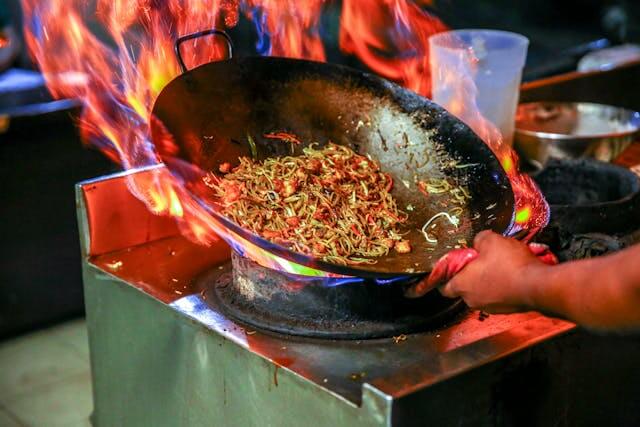General Rule:
The Sages prohibited eating food cooked by a non-Jew, even if all the ingredients are kosher. This was primarily to prevent social closeness and intermarriage. A secondary reason is concern that a non-Jew might cook non-kosher food, causing a Jew to eat it unknowingly.
Application to Non-Observant Jews:
If a Jew who does not observe kashrut prepares the food, we generally avoid eating it due to uncertainty about ingredient and utensil kashrut—unless a religious Jew supervises the process.
Types of Cooking Included:
The prohibition includes all forms of cooking: boiling, frying, baking, roasting, etc.
Foods prepared without heat or with only hot water (not on a fire) are debated; exceptions exist if the cooking wasn’t done in the original heating vessel.
Foods made entirely without heat (e.g., pickled or salted fish, olives, or pudding mixed with cold milk) are not included.
Modern Cooking Methods:
Electric heat (ovens, stoves, induction, sous-vide): generally included in the prohibition.
Steam cooking: debated. Israel’s Chief Rabbinate does not rely on leniencies, but some kashrut authorities abroad do.
Microwaves: disputed, but usually not practically relevant as they mostly reheat pre-cooked food.
Intentional vs. Unintentional Cooking:
If a non-Jew accidentally causes food to cook (e.g., by restoring power), it may be permitted.
Cooking Location:
Food cooked in a Jew’s home by a non-Jew is still forbidden, under pressing circumstances, certain leniencies may apply.
Factories: Some argue for leniency due to industrial scale, lack of personal connection, or indirect cooking—but most authorities in Israel require Jewish involvement.
Which Foods Are Included?
Only foods worthy of a king’s table—those typically served at formal or significant meals—are included.
Foods that are commonly eaten raw (like fruits, milk, water, etc.) are not included.
Already cooked foods reheated by a non-Jew are not included.
In mixed dishes, the status follows the main ingredient.
Examples of Forbidden Foods if Cooked by a Non-Jew:
Rice, pasta, potatoes, meat, eggs, legumes, schnitzel, etc.
Examples of Permitted Foods:
Raw fruits and vegetables, beer, sugar, lemon, honey, mushrooms, pickles, etc.
Avoiding the Prohibition – Jewish Participation:
If a Jew places the food on the fire or stirs the pot, the food is permitted.
Ashkenazim (Rema): lighting the fire is sufficient.
Sephardim (Shulchan Aruch): require active participation in the cooking itself.
Special Cases:
Shawarma: Some authorities require a Jew to carve the meat; others permit even if a non-Jew does it, depending on how it’s cooked.
Hot beverages (e.g., coffee by a non-Jew): Despite halachic concerns, many communities are lenient based on tradition and technical reasons.
Restaurants and Kashrut:
Regular certification: Often relies on the Rema’s leniency (a Jew lights the fire).
Mehadrin certification: Requires a Jew to actively cook.
After the Fact (Bediavad):
If a cooked food is mixed with permitted food and is less than half, it is nullified and allowed.
Utensils: Generally require koshering (even three times for certain materials), but in cases of doubt or secondary use, leniencies may apply.
Nachman Harris. Kosher Expert.
Available for any of your questions






